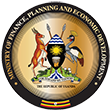Financial Sector Development
Uganda’s national financial system comprises of financial institutions (formal, semi-formal and informal), financial markets, and the payment systems, which together enable the exchange of goods and services and the allocation of capital. The formal financial institutions include Commercial Banks, Microfinance Deposit-taking institutions and Credit Institutions.
